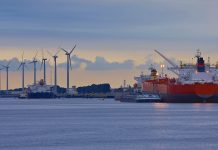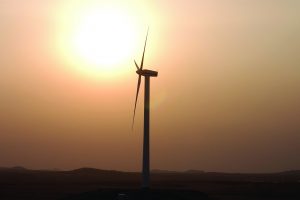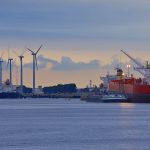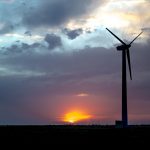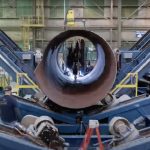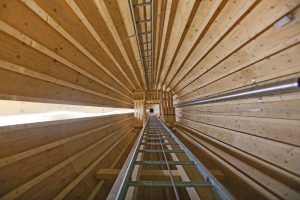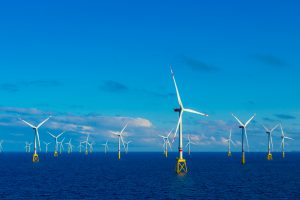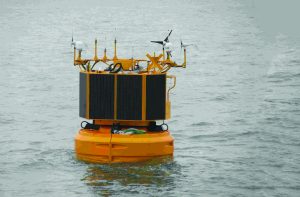There are few renewable-energy generation sources with a storied history as long as wind power, dating back hundreds of years to early windmills. Even modern wind turbines have been around for a very long time, with some sites operating assets decades old. One of the benefits of that long history is that the technology is reliable, so many energy producers are increasing their investment in turbines as the green energy economy continues to grow. In response, power generators are rapidly acquiring both old and new wind assets to expand their portfolios.
With that expansion comes new insight. As generators gain more expertise with a wider range of turbines, they quickly come to realize they often do not truly “own” their wind assets. Turbines may be installed on their property, fully paid for, and generating electricity, but, often, much of the data those assets generate — data that operations and maintenance teams need to run their fleets efficiently and effectively — is trapped inside black-box technology controlled by the original equipment manufacturer (OEM).

This trapped data is nearly as valuable as the turbines’ energy output because it is critical to long-term operational excellence. A power generator without adequate condition-monitoring visibility operates at the whims of an external organization, typically an OEM, and it is beholden to its pricing structure, service timelines, and asset reporting and monitoring strategies.
To address this and other issues, the most effective organizations are seeking ways to liberate their data from the black box and take back control of their own assets. Fortunately, a solution exists. To better meet their operational efficiency goals, forward-thinking wind-power generators are implementing integrated condition monitoring systems (CMSs) as part of control system retrofits on their turbines (Figure 1).

The value of data
As the number of wind-power generation facilities around the globe continues to grow, so does competition. Gaining and maintaining a competitive advantage in such an environment requires efficient, reliable, and flexible operations, which, in turn, require reliable data and analytics. Consequently, data collected from turbine sensors is incredibly valuable. Such data not only provides a history of how the turbine has operated over its lifecycle, it also offers both methods to anticipate failure and insights to improve operation.
The vibration data collected from turbine components is essential to determining the health of the asset. Whether collected from the gearbox or the rotor, vibration frequencies help identify the most common failures in wind turbines in their earliest stages. When a team can identify asset failures early, they have more options for repair. When the maintenance team can anticipate a necessary repair, they can complete it on their own schedule during a planned service window, with all parts, personnel, and strategies prepared in advance. Such solutions lead to less downtime, along with less risk of costly repairs from secondary damage resulting from a critical failure.
However, collecting and analyzing vibration data also offers more than predictive maintenance. Without adequate data, operations and maintenance teams cannot track and trend performance to help identify patterns of weak components or poorly functioning assets. If a team relies solely on its OEM for performance and health data — with an associated fee each time — it is unlikely to see if a part wears out after 10 years, rather than the 20 years it should have lasted, nor be able to identify such a trend across multiple identical assets in the fleet. Without this type of data, teams will likely never know if failures are due to operational factors or mechanical design errors.
The struggle with standalone CMS
Many legacy wind turbines have no standard condition monitoring solutions at all. However, even in newer assets, or old ones with an existing CMS, when the CMS is operated by the OEM, it is of very limited value to operations and maintenance teams. In many cases, the users with an OEM CMS do not receive any data directly. Instead, the data goes directly to the OEM. If users want access to that information, they may be able to purchase it through a fee-based reporting service. However, even that service will have limits on what data is available.
One of the key reasons standalone OEM CMS systems operate as black boxes is that the raw vibration frequency data coming out of the sensors is dense and complex. Turning that data into actionable information requires expertise, and many power-generation facilities do not have the expert analysts on hand to do that work. For example, if a turbine has a degrading tooth on a gear in a gearbox, a certified vibration analyst must look through the raw data and identify that problem using frequency patterns before maintenance can act upon it. Some OEMs can offer that service with a standalone CMS, but the trade-off is that a lot of other valuable data remains trapped.
Integration drives performance
The most effective way to collect condition monitoring data from a wind turbine is with a CMS that is first integrated into the asset’s control system, and then integrated seamlessly with the user’s own green supervisory control and data acquisition (SCADA) software. Most OEMs do not mix operations and CMS data. However, using the right tools, they can be combined, both at the component and SCADA level. With such a solution, teams can make better operational decisions based on correlating that data with the information they receive from the CMS (Figure 2).

For example, an organization running a CMS integrated with the control system and a green SCADA solution can better manage its maintenance based on organizational schedules. If a turbine that runs at 2 MW is experiencing mechanical problems, it might be possible — using a combination of reliability and operational data — to derate the turbine to 1 MW, allowing it to keep operating until a planned maintenance window, rather than bringing it down immediately. By using the analytics possible with such an integrated solution, teams can save the money on an extra service call and continue to operate, albeit at a reduced rate, until the problem can be remedied.
Teams also can use feedback from an integrated CMS and green SCADA software to optimize operation. These operations teams use the CMS and SCADA in tandem to identify where their strategies can be adjusted to extend the life of assets, helping the organization to avoid the cost of unplanned services. Moreover, the same data can be used for improved planning when heading into an outage. Maintenance teams can be sure they have the right parts, service people, and equipment to get the job done correctly the first time, without the risk of extending outages when and if unexpected problems arise.
Integrated solutions also provide teams with more flexibility. When teams can track and trend asset health alongside operational data, they can implement new, dynamic strategies based on changing conditions — especially the fluctuating price of the energy market. For example, a team with access to the right data may be willing to allow extra wear and tear on turbines when the price per kilowatt-hour is high. The team can either set automatic strategy changes in the control system, or they can perform manual changes based on feedback from the green SCADA software.
Integrated CMS solutions are also significantly easier to use because they are designed with intuitive interfaces. Where many standalone CMS solutions provide only raw data, the best systems easily integrate with a green SCADA system to provide simple asset health displays, where a healthy asset needing no attention displays in green, an asset with a developing flaw is yellow, and assets with critical issues appear in red. With this type of an interface, users of any experience level can quickly and easily identify which assets need attention and how soon they must act.
To further improve decision making, the most advanced systems empower users with actionable information, allowing them to click into assets, and then access intuitive reports and raw data from within the SCADA system — eliminating the need to move back and forth between different software interfaces to diagnose and solve problems.
Finally, with access to so much data from a single system, teams also are empowered to use condition-monitoring data to compare multiple assets or even multiple fleets. For example, a team might quickly see how temperatures increase on a fleet of similar assets when the wind blows in a specific direction, suggesting a common flaw across a whole group of turbines. Moreover, that same data can be combined with other operational data — across the park, fleet, or globe — to identify big-picture trends.
Retrofits simplify CMS
Just as control-system retrofits simplify and reduce the cost of bringing legacy wind turbines up to new standards, adding a CMS during that same project reduces complexity, while simultaneously shortening time to return on investment. If the retrofit is performed on an asset that already has a CMS, the new system will likely be able to repurpose the existing sensors in the turbine for use with the new system, reducing installation time and eliminating costs.
However, even when no CMS exists on the legacy system, adding it as part of a retrofit is usually the best value solution. Integrated CMS solutions are simply a module that plugs into the modern control system, eliminating the need for additional infrastructure (servers, networking equipment, etc.). Equivalent standalone systems are typically three to four times more expensive than an integrated solution.
While exact savings are difficult to calculate, avoiding a single incident of critical damage on a turbine can typically pay off a retrofit with a CMS very quickly. In most cases, a single, unplanned service visit will require at least two technicians from the OEM over multiple days at a cost of thousands of dollars per day. Moreover, the turbine will be unavailable during that time, resulting in lost production, and the potential of failure to meet supply contracts (Figure 3).

That same scenario can also be complicated by the need for specialized equipment, such as cranes, which can cost tens of thousands of dollars per day to rent. Moreover, if parts are out of stock, organizations might find outages extended even further. The capacity of a CMS to predict problems and empower teams to postpone service until scheduled outages, when their teams are fully prepared, reduces repair costs dramatically.
Preparing for the future
While an integrated CMS begins delivering benefits immediately upon installation, it is also a critical element of a power generator’s long-term strategy. Power-generation operations are only getting more complex as the grid continues to evolve around the globe. As that complexity increases, teams will be required to deal with more variables, and there will come a time when organizations need to rely on digitalization and machine learning tools to inform decision making.
Integrated CMS solutions are the first step toward this digitalized future, integrating not only with the control system for seamless access to critical data, but also with the operation team’s green SCADA solutions, to provide better visibility and intuitive, actionable insights on the ground. Preparing for this future today will help secure competitive advantage, even as the architecture and operational strategies of wind power generation continue to evolve.


















